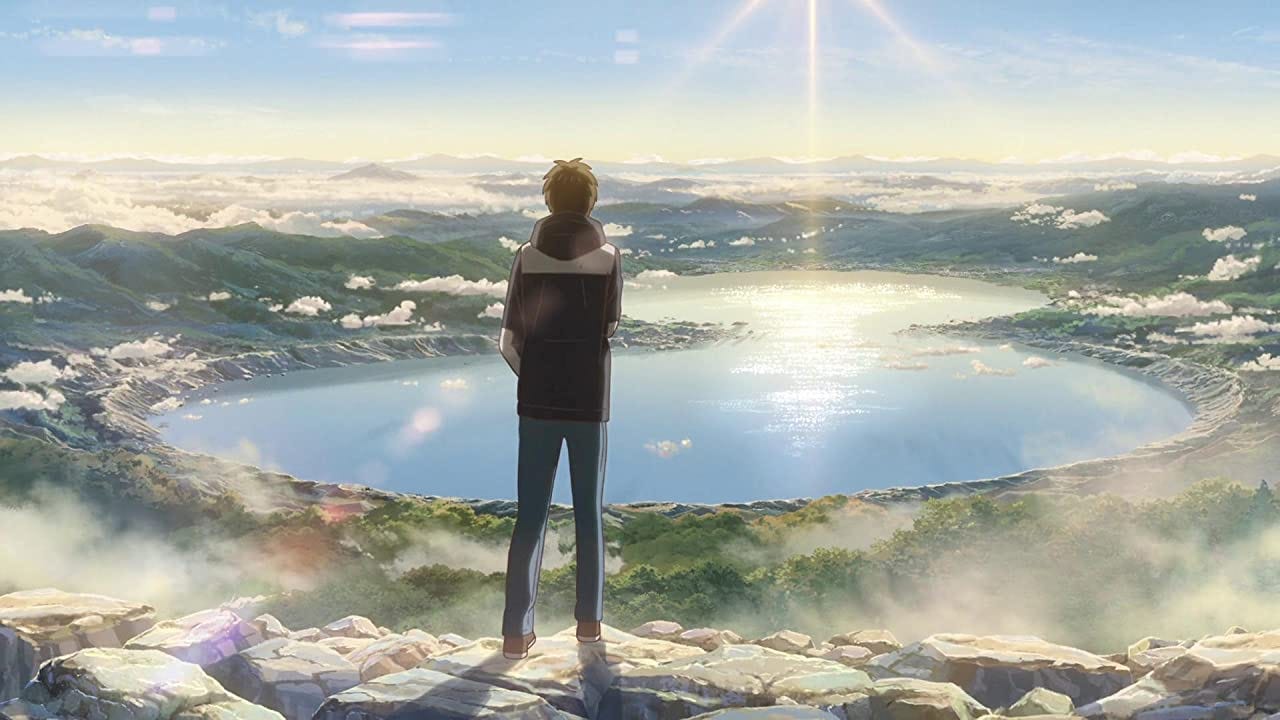Your Name (2019) : A gorgeous Japanese folk tale about love and longings.
Your Name (2019) aka Kimi no Nawa had become the highest grossing anime of all time and surpassed the magical Spirited Away (2003). Due to this occurrence many have placed Makoto Shinkai as the successor to Hayao Miyazaki. This of course is subjective but I understand the reasoning. As Miyazaki is a legend of his own and the stories he tells are through a prism of children and nature predominately. Shinkai has a much more attachment to stories of love and relationships. But both are similar in the sense that they are fantastic story tellers and they are story tellers of the humane. It is an understatement to say that Shinkai cannot be compared to Miyazaki. The comparison is solely on the basis of the reach and magic of their anime’s.
Your name’s plot is something that we have seen often “The body switching” story. But that is only a plot or tool used for something magical. Mitsuha Miyamizu is a high school girl located at the rural town of Itomori and she wishes one day as a meteor falls to be a ‘Tokyo boy’ in her next life. She does this because she believes she longs for a more exciting existence. So as the wish comes true, she one day switches bodies with Taki Tachibana. A good-looking high school boy in Tokyo. Due to this they wake up with each other bodies switched and they must undergo their daily lives and social interactions allowing them to understand one another. But the catch here is that when they come back to their original bodies during some days, they lose their memory and cannot remember what the other person did. Because of this they try to communicate to each other by leaving messages on their phones or on notebooks or on papers and sometimes they would write on their bodies. The interactions and events that occur between Taki and Mitsuha has this certain poignant feel to it. It is like they are meant to be
Their monotonous lives (which is beautifully represented by the metaphor of the train) are only exciting when they learn about each other. They understand each other and help each other out like for example how Mitsuha feels for Taki and his crush on a woman at his workplace. So Mitsuha tries to create a conversation or a starting point between them. And Taki takes Mitsuha’s childish and sometimes cowardly characteristics to a character of a rough and tough man. There is also the wonderful dynamic between the city boy in a rural life and the rural girl in the city life. In fact, the film also has gags and comedy through the instances of Taki and Mitsuha experiencing each other’s lives respectively.
The beauty of the film is how Shinkai is able to incorporate Japanese folk tale into the body switching trope. It allows him to create this magical interaction between them and juxtaposing between Mitsuha and Taki and between fate and time. There is an expression used in Japanese called Musubi which is referred by Mitsuha’s grandmother that it is an overpowering fate that weaves and ties together people and it is also referenced as the literal flow of time. The weaving of this thread is metaphorically used by the thin red thread used throughout the film. It sort of is the attachment between Taki and Mitsuha. It is also this fleeting and non-existent attachment between two strangers and this is not only between people who are in love but also can be between mother and her baby or a father and his daughter.
The animation is gorgeous. It is breath-taking that even if you are not a fan of anime, I would still recommend to watch the film only for its stunning artwork and animation. Makoto Shinkai is always revered for his stunning animation style. His work on Garden of Words could be used to support this claim. His style is a great mixture of hand drawn style with computer generated technology. The way the lighting of scenes spans and illuminates the atmosphere to the characters and their seamless movement makes the film ecstatic and punchy. I must give a shoutout to one particular set of animation that occurs in the film where the tale of the thread and musubi are represented. During this scene Shinkai opts to showcase it in some daring and beautiful 2D animation. And I firmly believe it can only be done in 2D animation and with the colours being vibrant and popping out on the screen we cannot but admire and salivate at the technique and animation being portrayed. The landscapes and city of Tokyo all look beautiful and exuberant. It is the sort of animation that expresses surreal Japan that it can put real life films to shame.
Your Name is a wonderful tale of love and longings. It is a combination of ancient myth with modern day Japan. Shinkai has once again proven his mastery on human relationship and the gorgeous animation accompanied with it. The bond between Taki and Mitsuha’s progresses beautifully and it creates empathy towards them and it is the most essential part of the film. We want their longings to be fulfilled and Shinkai creates this ‘Cliff hanger’ of sorts towards the end (don’t worry I wont spoil it) but it just works wonders. This film can be described by me from what Mitsuha’s grandmother says “Treasure the experience”.












